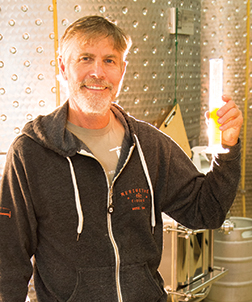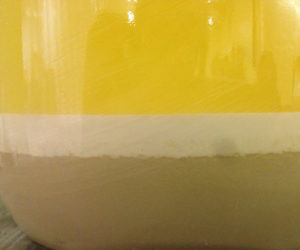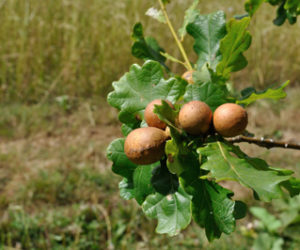After you’ve made a couple batches of hard cider it is fun to branch out to some more unique styles. In this column, we ask for advice from three cidermakers to make fruited (Incline Cider), spiced (Meriwether Cider), and hopped (Jason Phelps) hard cider.

Jordan Zehner is a Co-Founder of Incline Cider Company in Tacoma, Washington
For our fruited ciders we primarily use fruit juice as purees can be a bit harder to work with, needing some more attention on the filtration. For the majority of these ciders we add the fruit additions post-fermentation. I think the advantages of adding post-fermentation are the consistency it lends us for the end product and the ability to replicate a recipe. Co-fermenting apples with other fruits is a lot of fun — it is an additional world that is worth exploring, but, it also brings several new variables into the mix.
The ratio of apple-to-fruit depends on the end result you are looking for. Do you want to really sweeten something up or just add a touch of fruit flavor? Do you want to obtain color from your fruit addition? For most single-strength juices I’d say 5:1 apple-to-fruit is an easy place to start. Some juices will take a lot to shine through the cider and others just a touch. Just experiment and have fun with it.
We generally utilize a similar blend of apples to make most of our base ciders and do not tweak that apple mix to account for later fruit additions. This is part of keeping things consistent and of high quality for us. When sourcing apples I would suggest seeking out a place near you that offers fresh-pressed juice instead of getting too hung up on the variety. There is an enormous world of apples to explore but that would be my recommendation for a good jumping off place — something you can replicate and hopefully have some continued access to. I started making cider in Arizona and at the time finding fresh-pressed juice was gold — there was not easy, local access to any specific apple varieties.
We have a house yeast for most all of our ciders (including these fruited ciders) that we find accentuates our apple mix. However, for some smaller projects I enjoy experimenting with different yeast strains from the beer and wine worlds.
As winemakers and cidermakers know, it is all about experimenting and finding out what works for your style. There is no right or wrong way to make a fruit cider. If I had the flexibility of a home winemaker making small batches I’d probably spend a little more time playing with co-fermentations and making some sour ciders with fruit additions. I’d recommend that home winemakers try co-fermenting as well as adding fruit post-fermentation. Experience the differences of working with the same fruit in different ways. If you can get to a point where you are making a consistent apple cider, playing with different juice or puree post-fermentation additions are a great way to build out some recipes.
Working on a home winemaking scale really provides an opportunity to source high-quality, single-strength juices without breaking the bank at most mainstream grocers. Aim for juices without additives or funky extras, as generally the shorter the ingredients list, the better. When you only need a gallon or so (4 L), even utilizing whole fruits and juicing them yourself with a hand press, blender, or juicer is a great option. If you can’t find watermelon juice, just make your own!

Gig Leadbetter is an Owner and the Head Cidermaker for Meriwether Cider in Boise, Idaho
We make a lot of ciders with different spices and herbs in them. To get the most flavor out of the spices, 99% of the time we add them post-fermentation, however the approach varies depending on the specific spice. We use tinctures when the zest of a citrus fruit is used or when a dried herb/botanical is used in the flavoring. For fresh spices like hops, basil, etc. we dry hop where we let the spice sit in the cider in a mesh bag until the right flavor is obtained (let your palate be your guide).
These styles of cider can be dry or sweet. Personally, I’m more of a dry cider guy and love our hopped cider, which I think needs to be dry because it allows you the delight of hop flavor and aroma without the bitterness. Also that slight sweetness in the hops balances well with the dry cider. If I were to choose a sweeter cider it would be our grapefruit rosemary cider. The tartness and bitterness of the grapefruit zest tincture and juice is balanced by backsweetening with apple juice.
We don’t do anything different with apple or yeast selection for these spiced ciders. We generally stick with a five-apple blend making sure the Granny Smith with its tartness dominates. This blend has worked very well for us but on occasion we use crab-apple and foraged apple blends for experimentation. We’ve also tried small batches of New Town Pippins and Granny Smith as single varietals and it has worked well for us. Our house yeast is made for Champagne and/or white wine and is what we use in 95% of our ciders and then backsweeten post-fermentation. However, we have 5-gallon (19-L) carboys everywhere experimenting with new yeasts and apple juice combinations.
For home winemakers, my advice is if you’re collecting apples around your neighborhood to crush and press, make sure you have a combination of apples that have tannins, tartness, and sweetness. Post-fermentation, make both orange and lemon zest tinctures (zest of a lemon and orange, add ~6 oz./177 mL of vodka to each, shake, and let sit for a day or five), filter the zests out, add enough sweet apple juice to balance and add each tincture slowly until it pleases your palate. It’ll make a great summer cider!

Jason Phelps is a former professional cider and meadmaker at Ancient Fire Mead & Cider
For dry-hopped cider I generally add 0.25–0.5 oz. of hops per gallon of finished cider (2–4 g/L). I’ll typically leave those in contact for three days, and if I want more hop character I’ll dry hop a second time after removing the first addition. Any longer and I begin to pick up a grassy, herbal character and a building astringency. Hop lightly for a short period of time.
I have found that many hops have far too much character and can easily overpower a cider. One of my all-time favorites is Nelson Sauvin, which includes descriptors of white wine grapes, gooseberry, and passion fruit. These are all great matches for apple and the lightly floral aromas from the cider. I have also tried some European hops that might not be thought of as aromatic powerhouses, but have very complementary features. Hallertauers, including my own backyard grown ones, have been the most reliable hops for me to get a subtle, pleasant hopping without any concerns that I’ll have gone too far in 2–3 days.
One area I experimented with commercially was the use of hot-fermenting kveik beer yeasts like Hornindal and Voss to ferment ciders (these strains work best in the upper 90s °F/mid-30s °C). What I was looking for was how that aromatic profile is different in the outcome overall, but I also wondered if that could lead to hop pairings that did not work as well with ciders fermented with traditional wine or ale yeasts. We dry-hopped one of these ciders with Mosaic® hops, and the combination of the earthy, fruity cider with the big hop aromas was delicious. Outside of that, I typically recommend ICV D47, ICV D21, or 71B-1122 for traditional cider ferments — all of which work well with hopped ciders too. These are reliable at 62–65 °F (17–18 °C). With a good nutrient program they lead to clean ferments at a good pace with lots of pleasant aromas retained and without the hydrogen sulfide (H2S) production that cider is notorious for in rushed ferments.







